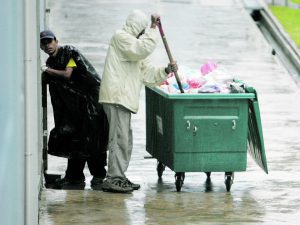
Driverless vehicles could be used to clean the streets and clear rubbish in Singapore, after two government agencies jointly called a Request for Information (RFI) exercise seeking the industry’s views.
The RFI, issued by the National Environment Agency (NEA) and Ministry of Transport (MOT), is for the design and development of self-driving multi-purpose utility vehicles (MPUV) for street cleaning and refuse collection in public spaces.
We hope to seek information from the industry, institutes of higher learning and research institutes on how we could leverage new technology to improve the productivity of public cleaning,” the agencies said in a press release.
[quote]”In the longer term, boosting the productivity levels in the delivery of public services will bring about cost and time savings and better deployment of manpower resources.”[/quote]

The adoption of new technology is also necessary to achieve more sustainable public cleaning and waste collection services, and in line with the Committee of Autonomous Road Transport for Singapore’s vision of deploying self-driving technology, the release said.
It has been reported the MPUV should be able to autonomously clean pavements and roads, as well as collect and dispose of litter. They can be monitored onsite or tracked remotely, and should generate less than 50dB of noise.
‘They should have a top speed of 25 km per hour, and be able to vacuum, sweep and brush around tree roots, uneven surfaces and broken tiles’.
Challenges with driverless vehicles
However, as Singapore newspaper TODAYonline pointed out, there are challenges associated with this new technology, stating: “For instance, the driver of the pavement sweeper vehicle would have to occasionally come down from the vehicle to remove bulky items, sweep corners that the vehicle cannot reach, or use an extendable hose to vacuum inside the bushes”.
SIM University senior lecturer Walter Theseira told TODAYonline: “such automations in cleaning technology could help substitute for increasingly expensive manpower costs, especially when such jobs are perceived as relatively less desirable”.
“A street sweeping vehicle might be readily able to cope with following a set path and ordinary road debris, (but) it might have challenges dealing with unexpected problems such as clearing tree debris after a storm or road debris after an accident, whereas a human work crew could readily do that,” Dr Theseira said.
[quote]”Whether self-driving vehicles would be embraced by the cleaning sector would boil down to the relative costs, especially as the aim is to get the job done at the lowest cost,” he added. [/quote]
Submissions by the industry for the RFI are due by December 28.